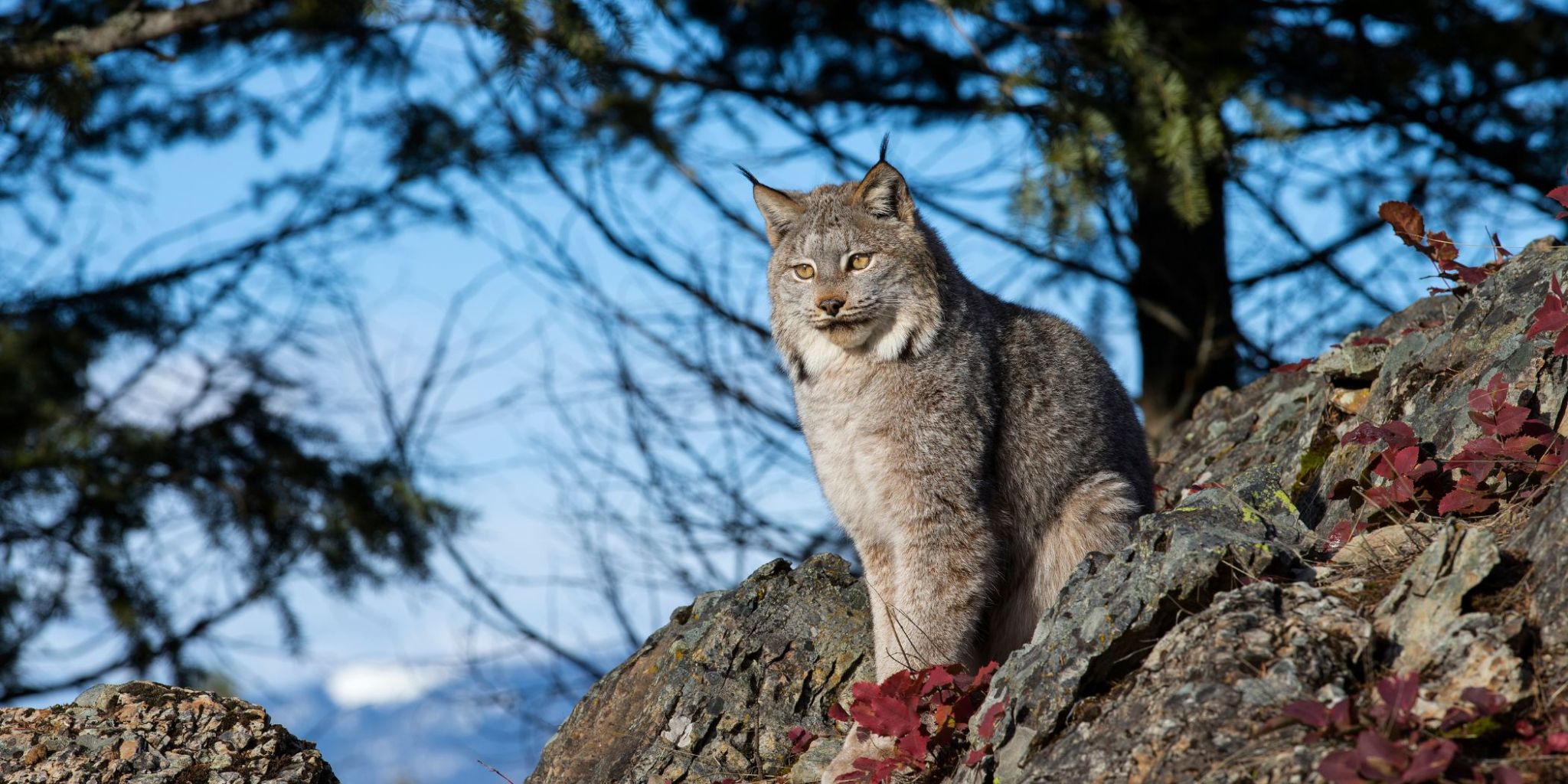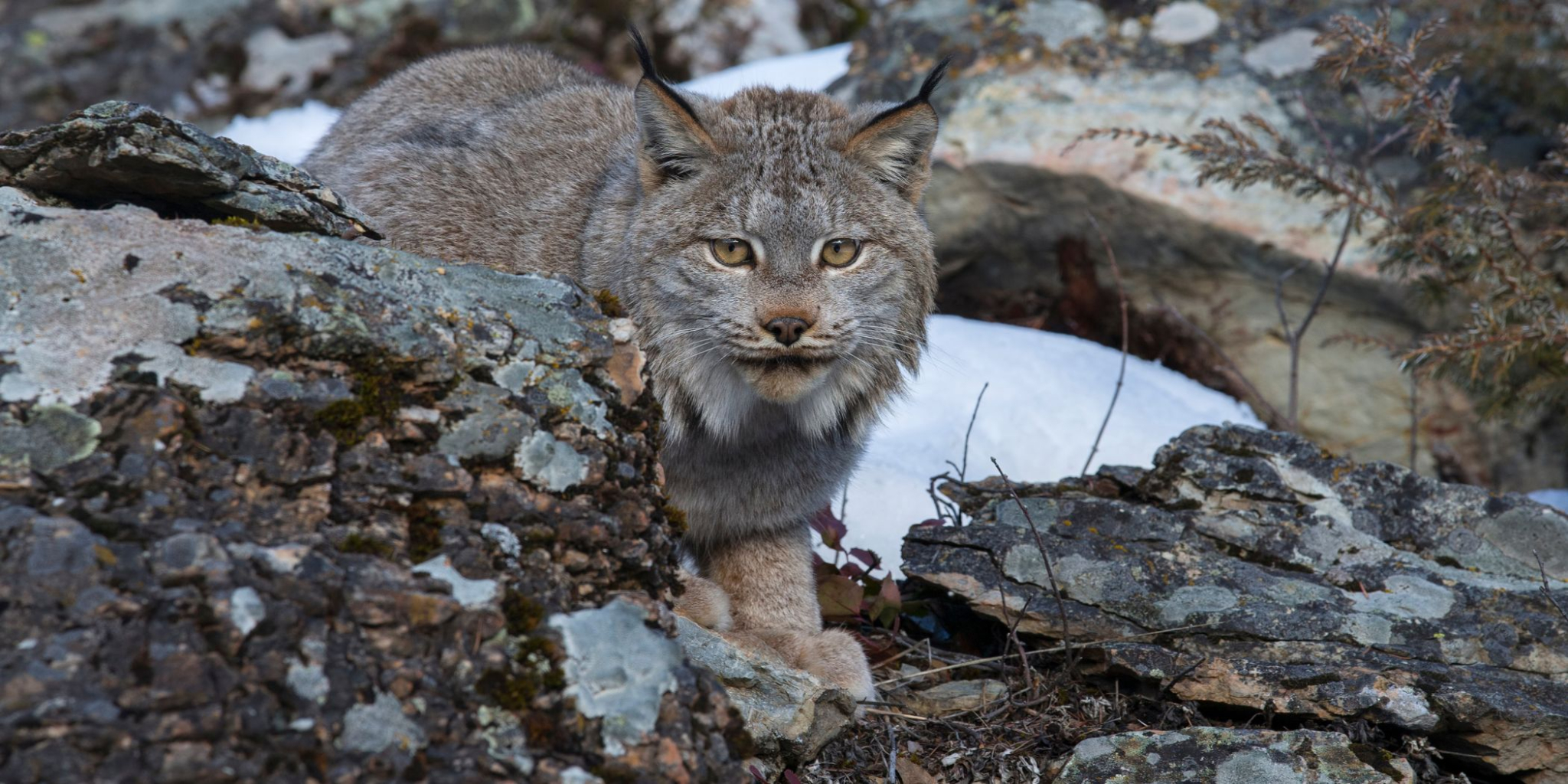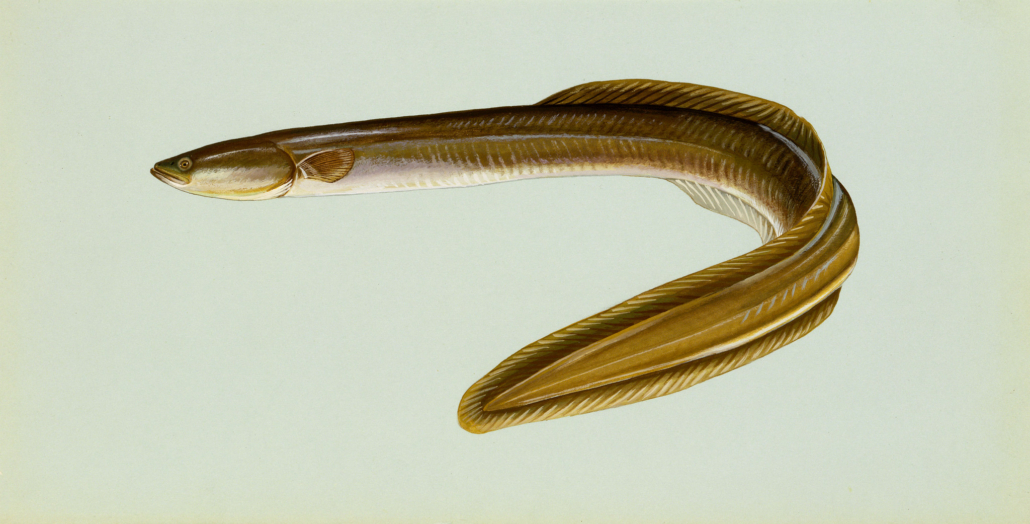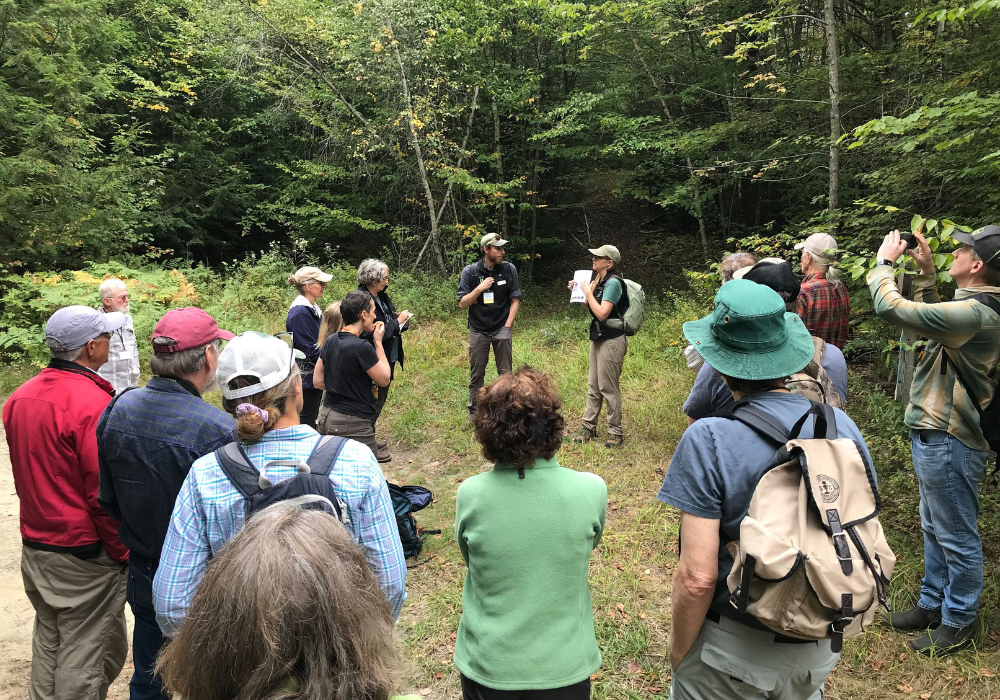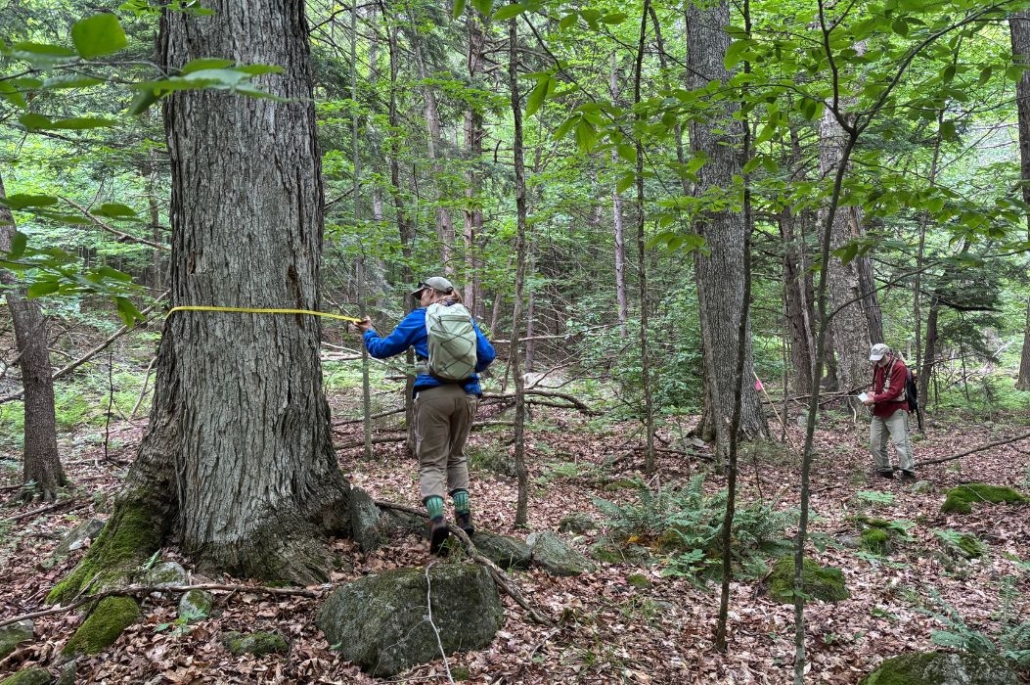Rare Lynx Sightings Put Carnivores and Wildlands in the Spotlight
One of North America’s most elusive predators has grabbed the Vermont spotlight this autumn. A Canada lynx was sighted in August in Rutland County and has been spotted multiple times since in its journey north. Just seven sightings of the state-endangered and nationally threatened wildcat have been confirmed in Vermont, mostly in the Northeast Kingdom, since 2016. Northern New England forms the southern periphery of the lynx’s range, most of which spreads across Canada’s boreal forest.
According to Shelby Perry, Northeast Wilderness Trust’s (NEWT) Wildlands Ecology Director, the lynx in question was probably after love and land: “Like cougars and other wide-ranging carnivores, lynx will travel long distances in search of a home range and a mate. This lynx was likely on the move in search of a female and a place to settle down.”
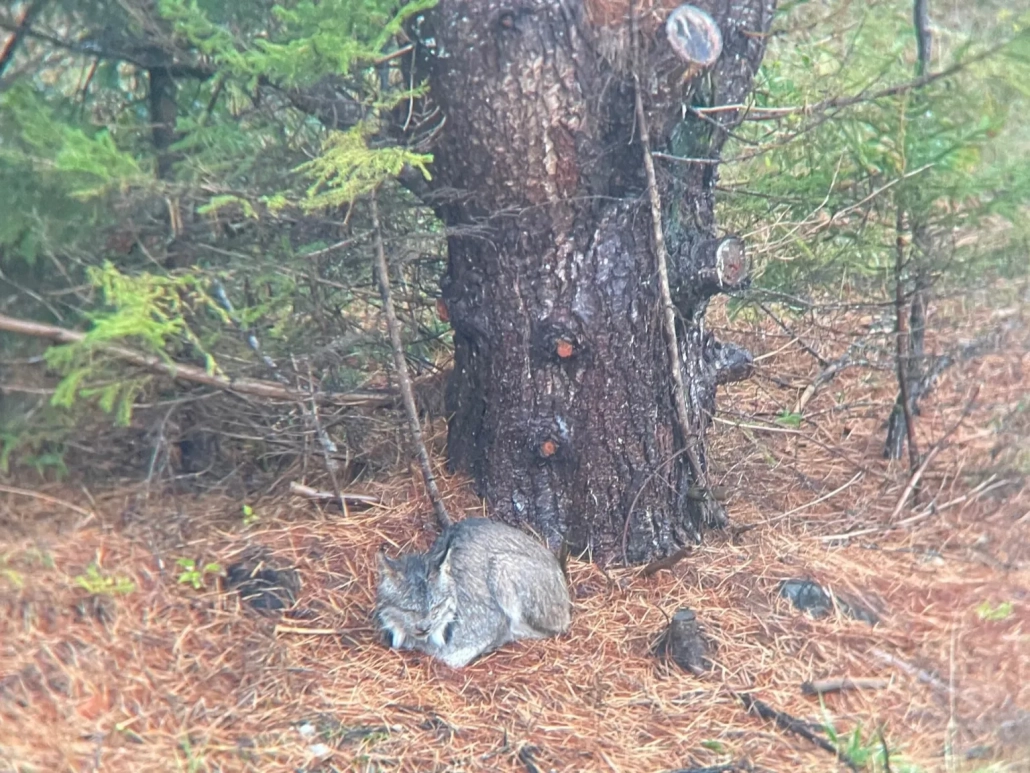
The Canada Lynx in question photographed in Vermont’s Addison County during dispersal. Courtesy of the Vermont Fish and Wildlife Department.


